Is my cat obese? Asking this question is a good first step to improve your cat’s quality of life. Feline obesity is an issue that compounds cat health problems as they grow older. It’s easy for us as cat parents to overfeed them because cats love to eat, and we love to spoil them. But even those few extra pounds can have a massive impact on your cat’s wellbeing.
While every cat is different, most adult domestic cats should weigh about 10 pounds or 4.5 kg, though that can vary by various factors like age, gender, breed, medical history, and so on. A cat is considered overweight when she weighs over 20 percent above her ideal body weight. So, even if your cat gains few extra pounds, it can have a massive impact on her wellbeing.
Think about feline obesity in this way
Compare an average 72 Kg human male with an average 4.5 Kg/10 pound cat. Around 1.5 Kg/3 pounds of weight on a cat’s frame is approximately 35 Kg/50 pounds of excess weight on the average human!
If you think of this proportionately, you’d know that those extra kilos definitely matter to your little feline friend.
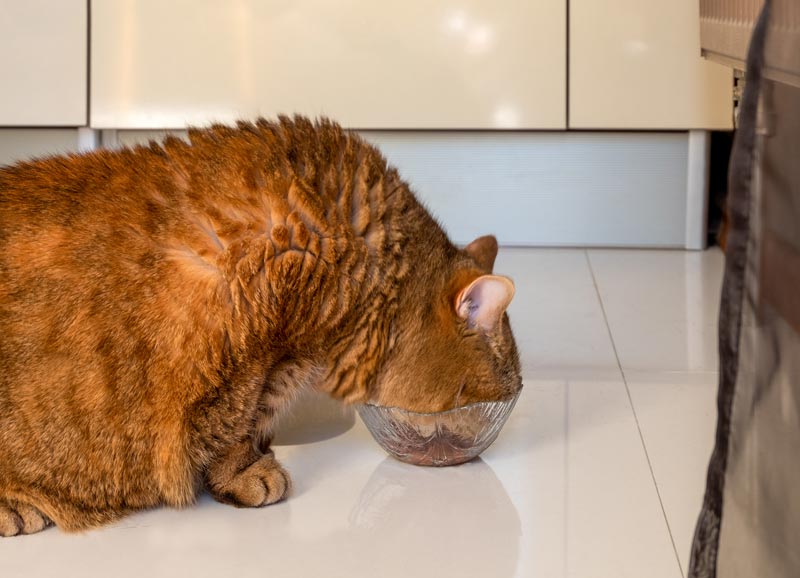
What causes a cat to be overweight?
What are the risks of feline obesity?
Multiple factors can cause a cat to be overweight such as physical inactivity, extended sleeping periods, staying indoors for too long, neutering, genetic influence, etc. Cat parents need to be cautious and take active steps to prevent and control obesity because it can adversely impact their physical and mental health. If a cat is obese, its life span shortens. According to VCA Hospitals, a 2.8-fold increase in mortality has been shown in cats of 8-12 years of age that are obese compared to those that are lean. Obesity also makes cats prone to diseases. Obese cats are at risk of
- many types of cancer, diabetes mellitus, heart disease, and hypertension
- osteoarthritis and faster degeneration of affected joints
- urinary bladder stones
- anesthetic complications as they are less heat tolerant
- skin problems and difficulty fighting infectious disease
- distress and mental health issues due to the obese cat’s inability to react quickly and follow instincts
How to check if my cat is overweight?
To check if your cat is overweight, the first step is to consult a veterinarian. You can also conduct a preliminary assessment at home to check for signs.
Here are 4 easy steps to check for feline obesity
- Check the Ribs: Run your hands gently along your cat’s ribcage. You should be able to feel the ribs with minimal pressure. If the ribs are easily visible, your cat is too thin. If you can’t feel her ribs at all, there is probably a bit too much cover on those bones.
- Check the Spine: On your cat’s spine, there are little bumps. These are the spinous processes of their vertebrae. You should be able to feel these bumps without really having to push down. But if you can feel the sides very easily, that may be a sign of muscle wastage or could be a sign of starvation. Conversely, if you have to really push down to find those spinous processes, you probably have an overweight kitty.
- Check the Waistline: Look down at your cat while she’s standing. Cats at a healthy weight have a slight indentation over the hips, something that resembles a waist. This may be hard to notice if the cat has long fur. If her sides bulge out instead, then your cat may be on the tubby side. Feel gently along her waistline and out to her hips – you should notice an almost hourglass shape as you move along this area. An overweight cat might not have this shape.
- Check the Abdominal Fat pad: It is normal for cats to have a flap of fatty tissue on their underbelly, but it shouldn’t be excessive. To test this, run your hands over your cat’s tummy. Be careful as cats usually don’t like it. Be gentle and check if there is too much fat built up that sways from side to side.
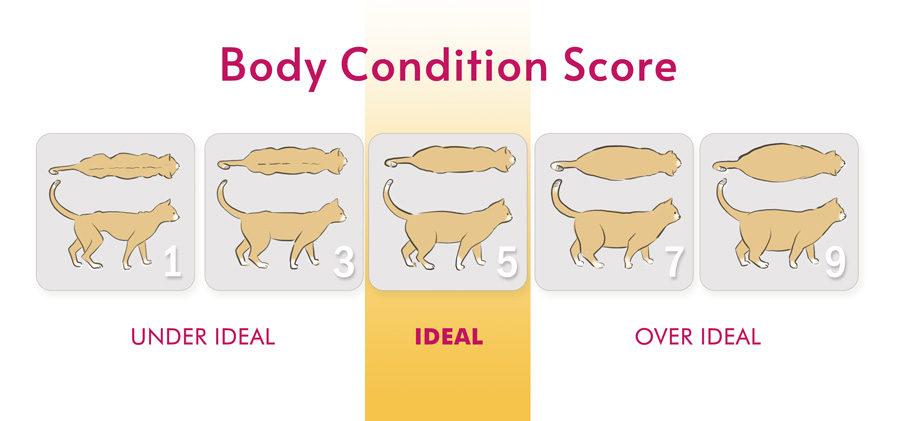
Now that you know tentatively where your furry friend stands, whether overweight or under, we strongly recommend taking your cat to the vet to confirm your assessment and for the steps forward. Vets generally use a Body Condition score chart where a number assigned to a cat’s body type ranging from 1-9, with 1 being very underweight and 9 being very overweight. 5 indicates the ideal cat weight. Such cats are well proportioned – ribs palpable with a slight covering of fat and minimal abdominal fat pad.
After this, you will know for sure if your cat is overweight. This is half the battle won. Let’s start by acknowledging that weight loss is tough for anyone – two or four-legged! To make this process work, you need to create a well-planned schedule and keep at it.
How can I help my cat lose weight?
Some tips to fight feline obesity:
- First things first – visit a vet:
We cannot stress this enough. Please do not succumb to internet DIY (do-it-yourself) guides. Your vet is your cats’ best chance for a healthy, happy life with you. A seasoned veterinarian can identify or rule out any underlying health issues that could be causing the weight gain. Once medical conditions are ruled out, they can provide you with guidelines for how much your cat should weigh and a healthy meal plan to help them get back to a healthy weight. - Feed fewer calories:
Measure as accurately as possible how much you are currently feeding your cat. This information is vital to your veterinarian for your cat’s weight loss plan. This will help determine the calories consumed per day and their initial caloric goal moving forward. Don’t cut back your cat’s food severely. It can put your cat at great risk of developing a potentially life-threatening liver disease called hepatic lipidosis. Follow the veterinarian’s instructions and be careful to avoid a rapid or unsafe drop in weight. When comparing with dry food, an equal weight of canned cat food is often lower in calories. The increased water content helps cats feel full and satisfied without adding extra calories. - Increase your cat’s satiety and reduce feline obesity by spreading out meals:
Smaller meals eaten more frequently throughout the day might be more satisfying for cats. Spread out the food into six or seven mealtimes. This way, your cat won’t finish a whole lot at one go and then again crave for food in the very next hour. - It’s all in the movement:
Get your cat to burn some calories. Laziness is often seen in obese cats. If that’s the case, try out tricks like hiding the meal or keeping it at a height where she can reach climbing stairs. That way, she’ll be compelled to pursue and kickstart her metabolism. Either buy or create a treat or food dispenser will make her put a little effort into obtaining it. - Play with cats:
Usually, cats should not crave food with a satisfied tummy – at least for a few hours. But with housecats, eating food has become a hobby rather than a necessity for the simple reason that there is nothing else to do. This attitude can prove disastrous. We know it’s not easy to get cats to exercise, especially when they are just not in the mood. However, our personal experience is when we show an active interest in playing and give them attention, cats respond and how! While playing has obvious physical health benefits of fighting feline obesity, it also helps cats deal with boredom and sadness.
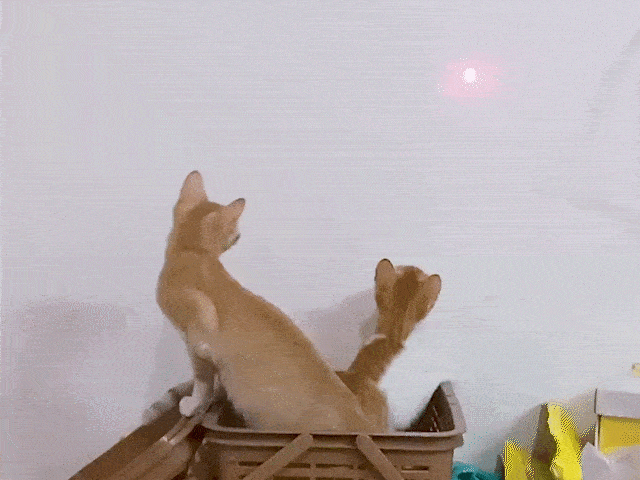
Rudra and Ira play with a Laser pointer.
Also, cats don’t need a great deal of exercise to stay healthy. According to Cat Behavior Associates, having two interactive play sessions of approx. Fifteen-minute per day with your cat is good enough to keep her active. You can engage her in activities like chasing her favorite toy, investing in cat-specific furniture that gives your cat the freedom to explore, enriching your cat’s mental health with simple interactive games like whack-a-mole, bringing out your cat’s instinct to catch prey with games like fetch (contrary to popular belief, Fetch is not just for dogs 😊). If you are interested in building a gymnasium for your cat, invest in a cat tree. It will enhance your kitty’s abilities to jump, climb, and keep her natural instincts alive while keeping feline obesity in check.
While on a cat weight loss program, beware of the few unusual health issues that can hinder weight loss. Remember that every cat is different, and the same plan might not work for all cats. Keep track of their progress, inform your veterinarian about the same at frequent intervals and make alterations if required.
Ensuring your cat is at an appropriate weight is one of the most vital things you can do for their physical and mental health and contributes largely to your peace of mind in the long run.
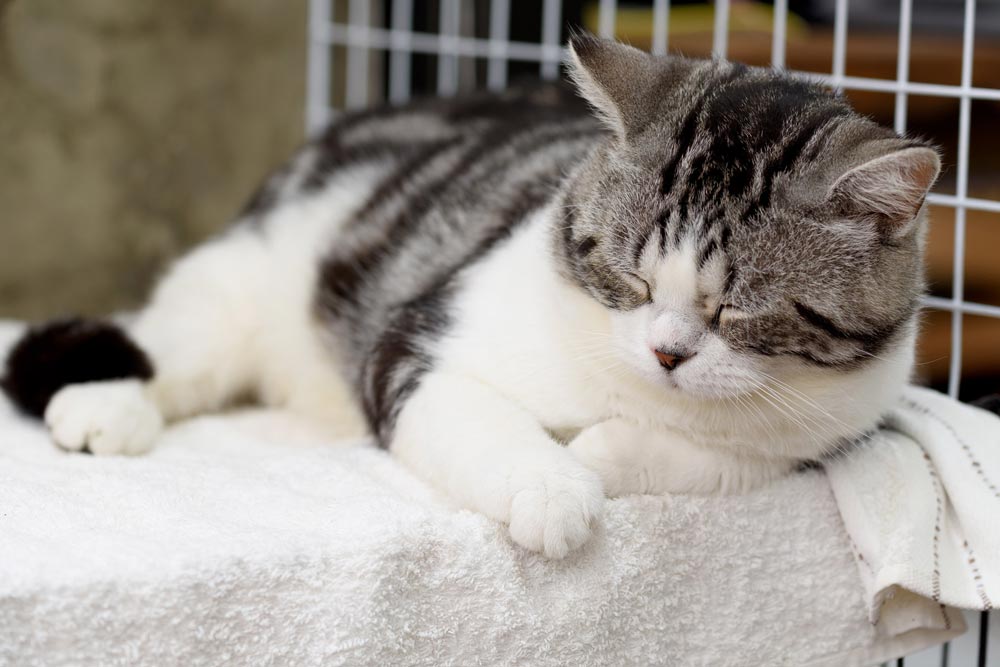
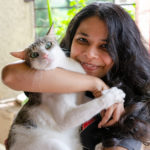
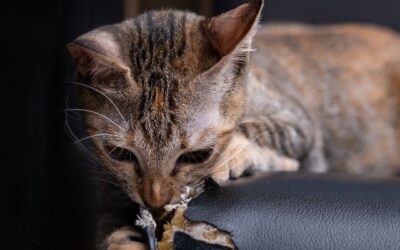

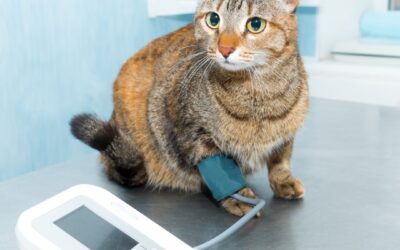
0 Comments